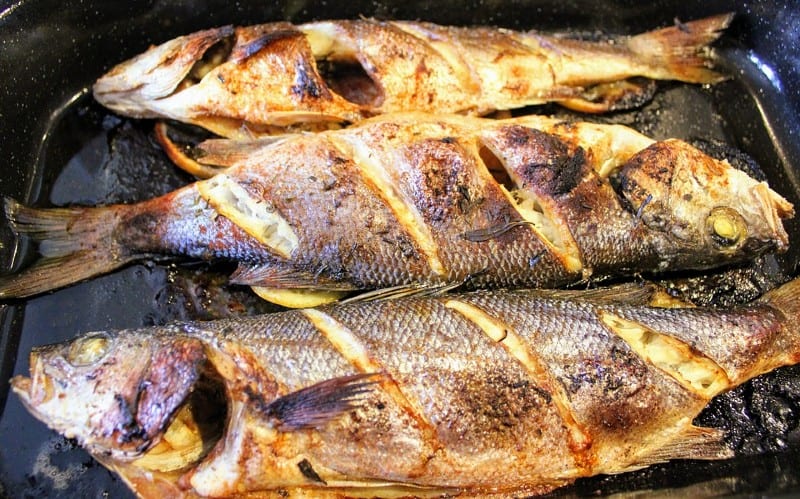Does Largemouth Bass Taste Good

Largemouth bass offers a mild, white flesh that many find appealing. Its taste is frequently described as fresh and succulent.
Largemouth bass is one of the most sought-after freshwater fish by anglers for both sport and dining. Renowned for its fighting spirit when hooked, it also earns accolades on the dinner table with its slightly sweet, tender meat. The flavor profile of largemouth bass is adaptable, blending well with various herbs and spices, making it a favorite for culinary experiments among chefs and home cooks alike.
Properly prepared, it can be a delightful addition to any fish lover’s menu. Catching and cooking your own can enhance the experience, offering a satisfying reward after a day on the water. Whether pan-fried, grilled, or baked, largemouth bass provides an enjoyable eating experience for those who appreciate freshwater fare.

Credit: theminimalistfisherman.com
The Lure Of Largemouth Bass
The popularity of largemouth bass in recreational fishing is high. Many anglers prize this fish for its fighting spirit. Kids and adults enjoy catching them.
When talking about taste, the physical characteristics of largemouth bass come into play. Their habitat can affect the taste of their meat. Clean waters mean better-tasting fish.
| Fish Part | Influences on Taste |
|---|---|
| Meat Texture | Often firm and white, with less oil than other fish. |
| Flavor | Can vary, mild to fishy, depending on their diet. |
Culinary Journey Of Bass
The culinary journey of bass reveals its versatile appeal. Largemouth bass, known for its firm texture, provides a mild flavor that serves as an ideal canvas for a variety of seasonings.
In traditional preparations, cooks often fry the bass fillets. They dunk them in a simple mix of cornmeal and spices before frying. Another classic method is to grill the fish beside wood flames, imparting a smoky taste.
Modern culinary twists have introduced new ways to savor this fish. Chefs now infuse international flavors, creating dishes like basil pesto bass or spicy bass tacos. The mild meat of largemouth bass truly embraces bold seasonings, giving eaters a delightful experience.
Taste Profile Breakdown
The Largemouth Bass offers a unique flavor that stands out. Its taste is mild compared to other fish. The sweet undertones and less fishy taste make it popular. Many say it is similar to crappie or bluegill. The meat’s quality depends on the water it lived in. Bass from clean, clear waters tastes best.
Freshness is critical for the best taste. A freshly caught bass has a firm texture. Always check for a springy touch. That’s how you know it’s good to eat. The flesh should be a pale to white color. This indicates high quality and freshness. Remember, the taste can be ruined by fish not kept right.

Credit: www.boatsafe.com
Preparing Bass For The Palate
Cleaning and filleting largemouth bass is a key step for a tasty meal. Before you cook, remove scales and guts carefully. Use a sharp knife to make smooth fillets. Rinse the fish in cold water to eliminate any remaining debris.
To enhance the flavor of largemouth bass, various cooking methods can be employed. Grilling imparts a smoky note, while pan-searing develops a crispy texture. Baking is a healthier option that maintains moisture. For those who enjoy subtler tastes, poaching in a flavorful broth might be preferable. Each method ensures the natural flavors stand out.
Nutritional Benefits
Largemouth bass is not only tasty but also loaded with nutrients. It’s a good source of protein and contains omega-3 fatty acids. These are good for your heart and brain. People should know that this fish has low levels of mercury, making it a safer option. Eating bass offers essential vitamins like D and B12. You also get minerals like magnesium and potassium. This is great for keeping your body healthy.
| Nutrient | Benefit |
|---|---|
| Protein | Builds muscles, repairs tissues |
| Omega-3 Fatty Acids | Improves heart health, supports brain function |
| Vitamins D & B12 | Strengthens bones, boosts energy levels |
| Minerals (Magnesium, Potassium) | Regulates blood pressure, maintains nerve function |
Remember to cook bass well to kill any germs. Enjoy bass in healthy recipes to get these benefits. A well-balanced dinner can include tasty largemouth bass.

Credit: noflukefishing.blogspot.com
Consumer Insights
Largemouth bass often sparks debate among anglers on its taste. Many seasoned anglers claim that properly cooked bass is delicious, offering a fresh, mild, and clean flavor.
The texture is described as firm yet flakey, making it similar to more popular fish like trout or halibut. Enthusiasts suggest catching younger, smaller bass to ensure the tenderest meat.
| Restaurant Type | Frequency of Bass | Consumer Demand |
|---|---|---|
| Fine Dining | Rarely Offered | Emerging Interest |
| Casual Dining | Occasionally Offered | Stable Demand |
| Seafood Specialists | Sometimes Offered | High Interest |
Frequently Asked Questions Of Does Largemouth Bass Taste Good
Are Largemouth Bass Good Eating?
Largemouth bass are considered good to eat, with a fresh, mild taste. They’re best enjoyed when properly cleaned and cooked.
Why Is Bass Not Served In Restaurants?
Bass is often not served in restaurants due to its limited availability and potentially high cost. Some bass species may also be subject to fishing regulations, impacting their presence on menus.
What Is The Tastiest Bass Fish?
The tastiest bass fish is widely considered to be the smallmouth bass, known for its tender texture and robust flavor.
What Size Bass Is Best For Eating?
The ideal bass size for eating typically ranges from 12 to 16 inches, providing the best texture and flavor.
Conclusion
In summing up, the flavor of largemouth bass is both versatile and enjoyable. Its mild, yet distinct taste pairs well with a variety of cooking methods. Anglers and foodies alike praise its texture and palate-friendliness. Whether grilled, baked, or fried, largemouth bass offers a delightful culinary experience worth trying.




